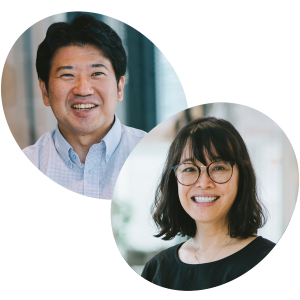Shibuya's town and culture continue to change at a dizzying pace due to changes in times and values, and large-scale redevelopment projects. Mr. Ozawa of Tokyu Land Corporation, who has been involved in Future Design Shibuya (hereinafter referred to as FDS) as a participating partner since the founding period, has been watching it on the front line for a long time. We once again asked Mr. Ozawa about the state of Shibuya's town and culture, and about the project he is promoting together with Future Design Shibuya.

A new commercial facility through redevelopment, where everyone can create “additional value to the town”
Osada Mr. Ozawa, you've been involved in Shibuya for a long time, right?
OzawaThat 's right, I'm part of the "Shibu-kaji generation" who used to go to Shibuya when I was a student (laughs). Little by little I was involved in the development of Currently, we are engaged in the development of Shibuya as a dedicated unit, but the impetus for this was the redevelopment project for the Harajuku-Jingumae intersection that will be built next year.
When Osada FDS was launched, the first office was located at the Jingumae intersection where Mr. Ozawa and his colleagues are currently working.
OzawaThat 's right, we rented out a property that was scheduled to be demolished as part of the redevelopment, and that triggered a close relationship with FDS. I've come to feel that there is a lot of potential in this collaboration.
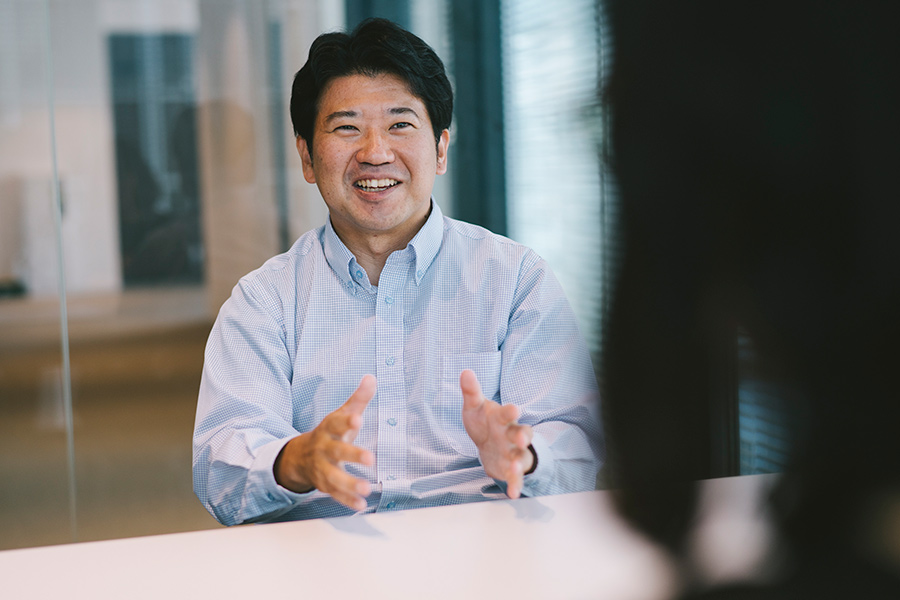
The new commercial facility at the Jingumae intersection is called Harakado and is scheduled to open in the spring of 2024. In addition, "Tokyu Plaza Omotesando Harajuku", which is located across the street, will be renamed "Omokado".
Next, in front of Daikanyama Station, a complex facility called "Forestgate Daikanyama" that mixes residences, commerce and offices is scheduled to open in October 2023.
The rest is Sakuragaoka. The area in front of the south exit of Shibuya Station will be renewed along with the ticket gates, and will be completed in November 2023 in the form of the "Shibuya Sakura Stage."
A project to transform the site of Kishi Gymnasium in Yoyogi Park into a park that can support the sports community is currently underway toward February 2025. It means that these four will open in succession.
Osada terms of order, Daikanyama, Sakuragaoka in front of Shibuya station, Harajuku, and Yoyogi Park are first, and each area has its own characteristics.
OzawaYes, each town has its own characteristics, and on top of that, the way of thinking that is common to all facilities is that they are not built only within relationships with tenants, as is the case with conventional commercial facilities. , each town, we are going to make it together with the people there. Of course, on top of the economic implications, we are also keeping in mind activities that will seep out not only inside the facility but also in the city so that we can further increase the added value.
For example, there will be a public bath in Harakado, and I would like to foster various communities from there. .
In Daikanyama, I think FDS has a relationship, but with the cooperation of Ms. Mana Saza of SWiTCH, who is a leading figure in the young generation in the field of environment and sustainability, it is a facility that focuses on consideration for the environment. However, by making it a base where we can tie up with various people and hold events related to sustainability, for example, selling eco-friendly sweets, we will create a space where such activities can be carried out. We are trying to make it a place where various people can gather, have dialogues, and send out information.
Osada though each town has its own characteristics, they all have one thing in common.
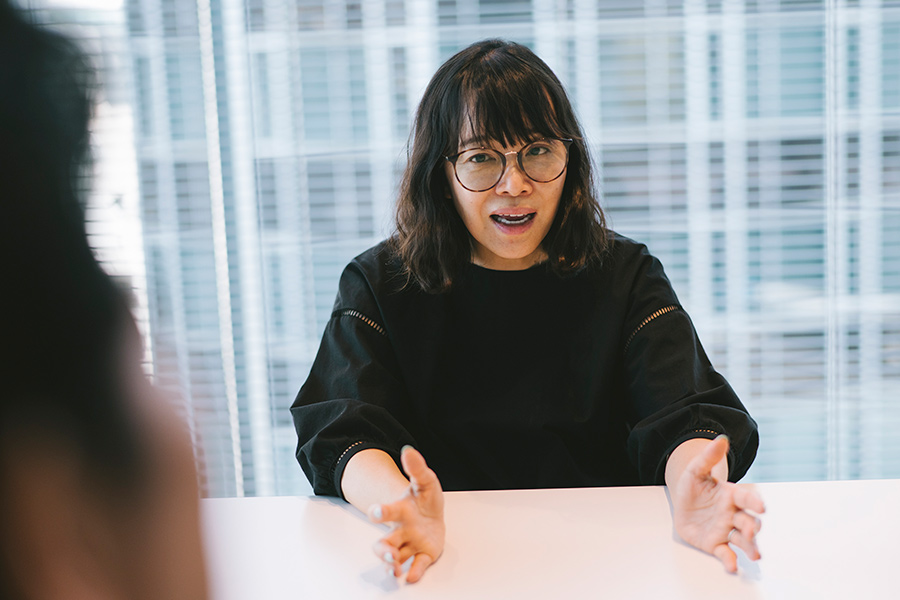
OzawaThat 's right. It is a big feature that we are looking for partners who will go beyond mere tenant contracts such as selling products and will work together to send out messages and create empathy with the city and people.
Osada recent years, has that kind of movement been gaining momentum in the industry as a whole?
Ozawa: For us, the building owners, this is quite a difficult task, and to be honest, we are also struggling every day. With construction costs rising, it would be easier for us to have a system where we can receive rent in the conventional way, but it is also a fact that it will not develop if we only deal with large places like we do. I think there are things that can only be done by a developer who has a lot of experience, so I'm gritting my teeth to increase the unavoidable value of the city as a whole.
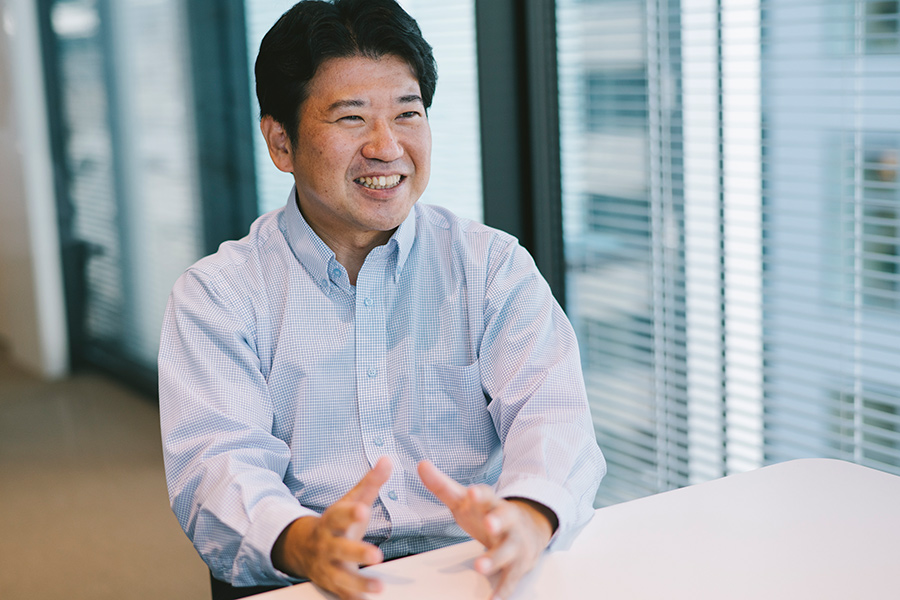
Sasahata Hatsu Machi Lab “Creating a better city life together”
NagataOne of the initiatives at Osada is that you are participating in the "Sasahata Hatsu Machi Lab" project.
"Sasa Hatahatsu Machi Lab"
“Sasahata Hatsu” = An organization that aims to make the Sasazuka, Hatagaya, and Hatsudai areas attractive, with the participation of diverse human resources from industry, government, academia, and citizens, and to share and realize the future image of the town. We are working with the aim of creating sasahatahatsu that is loved by the local community and proud of to the world with the power of everyone.
https://www.sasahatahatsu.jp
Although the Ozawa Sasahatahatsu area is located along a railway line, the axis of the community is placed in places other than railway stations, such as green roads and water roads. It is very advanced, and it is really a learning experience for our business.
Osada is the third year of the Sasahata Hatsu Machi Lab, and it is still in its early stages. What do you think of it, Mr. Ozawa?
OzawaThe people who are still involved in the area may only be a small percentage of the total number of local residents, but community development is not something that is done solely by developers and the government. It's a matter of course, and companies can also participate in the same way. It's the genesis period when such a system is established, but I feel a lot of heat.
Osada I mentioned earlier, each area in Shibuya has its own characteristics, and the Sasahata Hatu area is completely different from Shibuya Station.
Ozawa It's a residential area, so the local indigenousness is even stronger. That's why when various measures are implemented, it's really wonderful that everyone can participate in activities that make the city better with their own hands, instead of just complaining or expressing their opinions. I think that's it. For that reason, I hope that our resources will be involved in various developments and renewals.

Next Generations—A relationship where street sports and towns can grow together
Osada addition, Tokyu Land Corporation is also involved in the Next Generations project.
"Next Generations"
A project to create a playground in the town by promoting street sports and enlightening manners. We are cultivating a Shibuya-like sports culture and co-creating the appearance of "Shibuya = Mecca of street sports" with the scene and partners as a trinity.
https://www.nextgenerations.jp
OzawaI believe that the project I mentioned earlier on the site of Yoyogi Park and Kishi Gymnasium will contribute to the excitement of Shibuya's street sports scene. I'm here. I think that Koen-dori is a park approach to Yoyogi Park, and it is amazing that the exit of the terminal station, which is said to be used by 3 million people a day, and the entrance of the park are connected. I think so.
Osada 's true if you say so...
Depending on how the Ozawa road space is used, the value of the town will double or triple. In that sense, the road leading from Shibuya Station to the park is a very valuable asset. Moreover, I believe that we can further nurture young street sports talent like the Next Generations.
Osada would be nice if young talents from elementary, junior high and high school students could be picked up as a function of the city.

OzawaIn an era of declining birthrates, I think that as a parent generation, we have to "encourage" what children are interested in and devote themselves to. Compared to Europe and the United States, there are very few places in Japan where sports and art talents can be demonstrated, and I think that companies are still weak when it comes to the act of “pushing.” However, rather than forcing companies to bear the burden of donations and such, if we create a stage and a mechanism for mutual growth as a town, we can make them flourish sufficiently, and that will be returned to the town. It will be easier for companies to cooperate. That's why I think it's important to build relationships with each other.
Osada 's interesting. On the other hand, if street sports are further enlivened in Yoyogi Park, it is expected that there will be voices of concern that, for example, skateboarders will come out and slide. .
Ozawa Of course, it's a social issue, so we have to deal with it, but I really wonder if it's going to take away the enthusiasm of the small children who are doing skateboarding with their eyes shining.
For example, today's top skateboarders are all sustainable, starting with their boards, and there are many people who are conscious of the environment. I think I can do it. Since cracking down on nuisances alone won't solve this problem, I think it's important to work in a win-win way for them and the community while improving their good points. In that sense, the young athletes involved in the Next Generation really have tremendous power, so I think it would be great if we could borrow their power and do what we can to provide them and grow together. Masu.
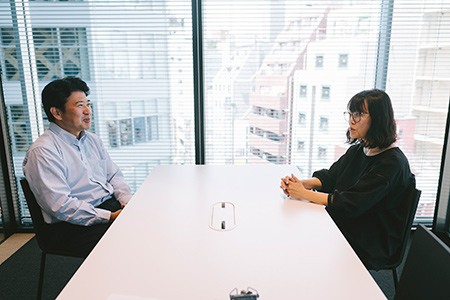
Secretary General Dialogue Series
Mr. Hitoshi Sato – The city of Shibuya continues to change, what is needed now for its future
Ryoma Murase – Enriching your offline life and mind through online experiences
Kenichi Ishii – Solving social issues with “business”—How to fight startups in the 20s
Michiyo Ono – Mental and physical health for all women. The first "awareness" from Shibuya
Takuma Inoue – Continuing to create attractive “precedents” for utilizing public spaces
Chiaki Hayashi – Co-founder of Loftwork Co., Ltd. | Face the future you really want to live
Interview/text) Suke Amada
Photo) Masaru Saito



